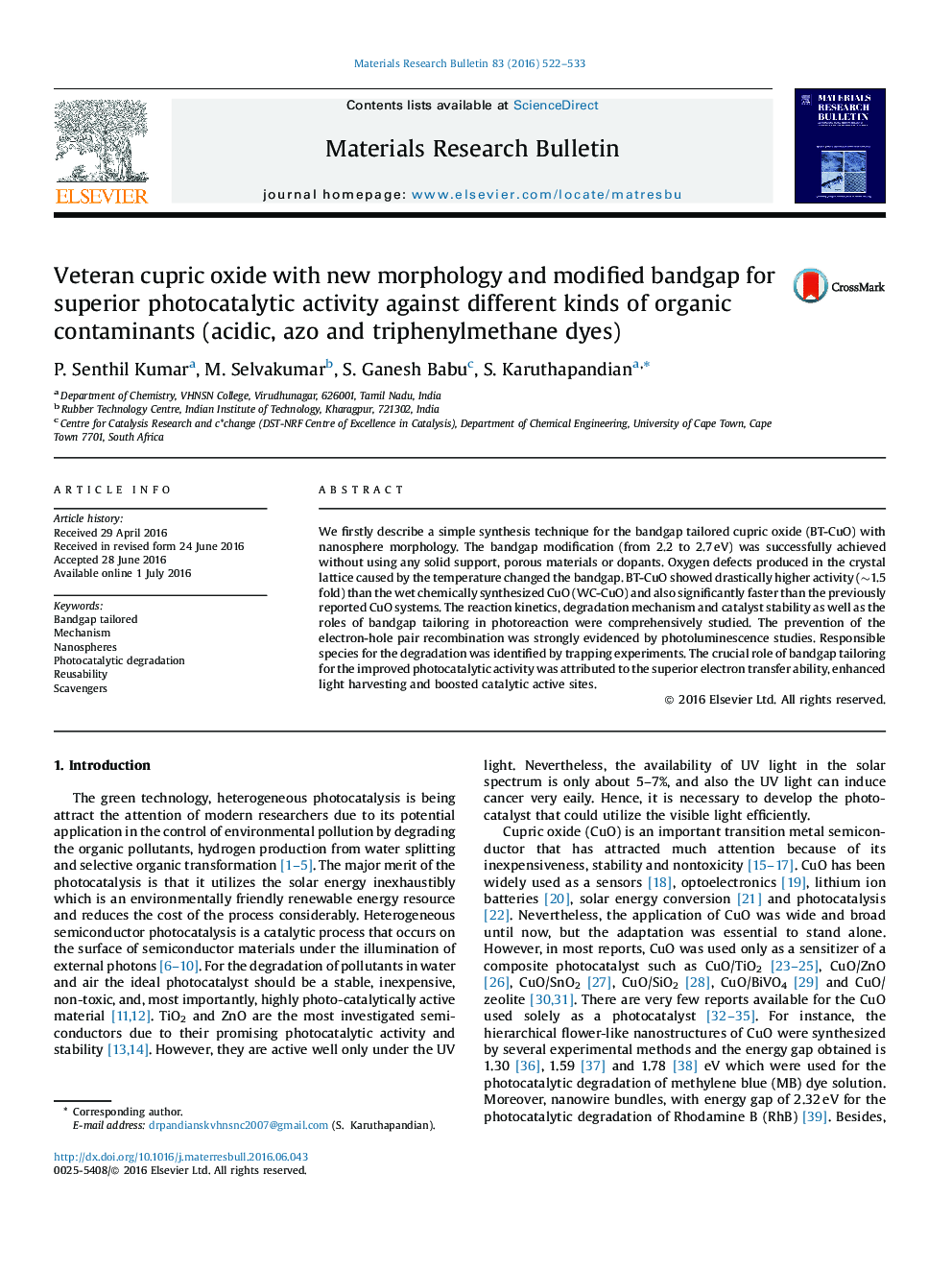| کد مقاله | کد نشریه | سال انتشار | مقاله انگلیسی | نسخه تمام متن |
|---|---|---|---|---|
| 1487063 | 1510692 | 2016 | 12 صفحه PDF | دانلود رایگان |
• Simple synthesis technique for the bandgap tailored cupric oxide (BT-CuO) with nanosphere morphology.
• The bandgap modification (from 2.2 to 2.7 eV) was successfully achieved without using any solid support, porous materials or dopants.
• The photodegradation of dyes was performed against the azo, cationic and triphenylmethane dyes.
• Favorable conditions for the degradation were optimized.
• The prevention of the electron-hole pair recombination was strongly evidenced by photoluminescence studies.
We firstly describe a simple synthesis technique for the bandgap tailored cupric oxide (BT-CuO) with nanosphere morphology. The bandgap modification (from 2.2 to 2.7 eV) was successfully achieved without using any solid support, porous materials or dopants. Oxygen defects produced in the crystal lattice caused by the temperature changed the bandgap. BT-CuO showed drastically higher activity (∼1.5 fold) than the wet chemically synthesized CuO (WC-CuO) and also significantly faster than the previously reported CuO systems. The reaction kinetics, degradation mechanism and catalyst stability as well as the roles of bandgap tailoring in photoreaction were comprehensively studied. The prevention of the electron-hole pair recombination was strongly evidenced by photoluminescence studies. Responsible species for the degradation was identified by trapping experiments. The crucial role of bandgap tailoring for the improved photocatalytic activity was attributed to the superior electron transfer ability, enhanced light harvesting and boosted catalytic active sites.
Schematic illustration of significance of bandgap tailoring on the photocatalytic activity of CuO.Figure optionsDownload as PowerPoint slide
Journal: Materials Research Bulletin - Volume 83, November 2016, Pages 522–533
